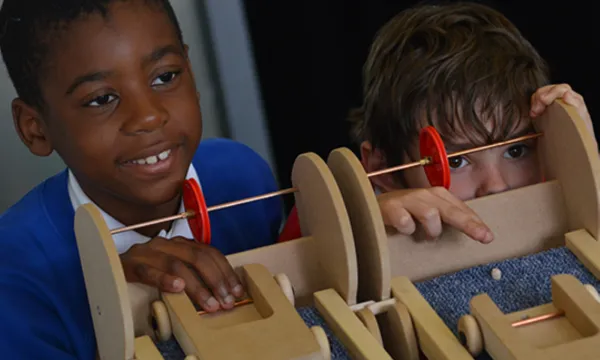
Forces and Magnets
The forces gravity, friction, air resistance and magnetism are explained, and ramps, cars and dataloggers add to the learning.
Recommended for: KS2 (7-11)
Access considerations
Workshop

The forces gravity, friction, air resistance and magnetism are explained, and ramps, cars and dataloggers add to the learning.
Access considerations
Workshop